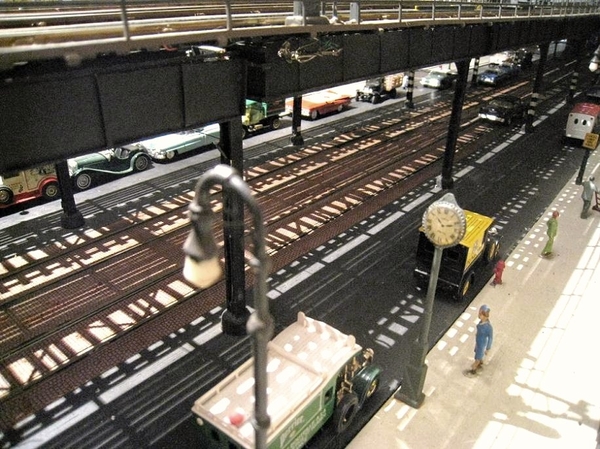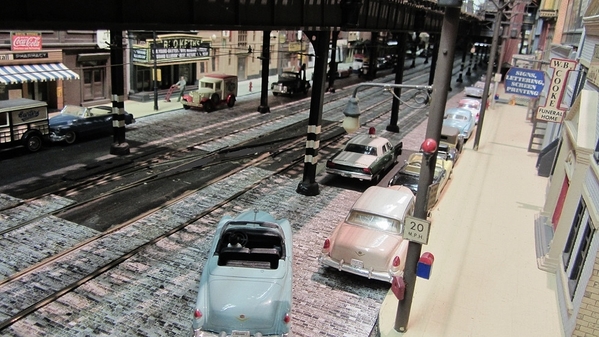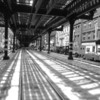Hello Yanksali
First, thanks to SIRT (Steve P) for the mention and nice plug -- Steve is a master modeler himself also
Building a realistic EL structure, trackwork and stations is pretty much like using the same general format as building a real prototype EL --- you need to consider space, location, how wide the structure (1, 2, 3 tracks or more) is to be, and as such it is generally built as "custom" just as real EL's were built -- designed to fit in, around, among existing streets, terrain, alleys, real estate, whatever, along the line, etc,
The "model" EL structures - to be fully realistic looking - are built basically like the real ones -- and to general "bridge and trestle building" standards. You first location-site and erect each of your EL columns, and then install cross spans on them to hang track girders from -- and upon the finished EL structure you then build your track deckwork. It takes quite a bit of designing and fabrication (well, mild engineering) skills to scratch-build fabricate and erect piece by piece, section by section. EL Stations must be custom designed like the real ones -- and most are "individualized" in construction to fit the needs, cross-street locations, and terrain.. Think of it as building an endless set of trestle bridges for your entire transit line... with "stations" along the trestle ! To be honest, it is not for the easiest to do for those with little to no modeling skills and having little, heh, patience and dedication. It "is" a modeling "art form" within itself - and requires much pre-research and dedication to attain the desired full realism and detail effects.
Of course, most early NYC ELs in Bronx, outer Brooklyn, Queens and northern part of Manhattan, were built over yet to be developed or paved (ie: mapped out on survey plans) street and avenues in basically rural barren woods or farmlands. We are lucky in the model field as we can design both the streets, the EL and the City-scape scene around it to all fit together.
Steve Olsen created a webpage (link here ) http://www.nycmodeltransit.org/ModelEl.htm on our NYC Model Transit Assn. website that Steve created and maintains. I also published a book and later, a CD, on building El structures and the layout modules for them to be erected on. The CD is available but the booklet it was created exactly from, is some years now out of print --- originally published in the late 1980's and upgraded in early 2000's.
I have no more, heh, space in my trainroom for building more (HO or O) EL structures for expansion -- I started with a small 4x8 HO SCALE EL layout back in 1964-5 which grew huge by late 1970's -- and I went to O Scale in 1984. Here is the link to my FLICKR ALBUMS pages of photos (in their respective Albums) of my O Scale and HO Scale EL layouts -- the HO Album shows a lot of re-construction as the layout grew and grew and older modules were re-worked to fit into the new layout plan.
https://www.flickr.com/photos/44268069@N00/albums
The ALBUMS feature photos by topic, subject and scene genre on the Layout (O and HO) -- so its quite a lot to see !
If you want to purchase custom manufactured EL structure components - per some of those mentioned in further above earlier postings on this Thread - be prepared to spend quite a lot of money for those products depending upon how big, long, your EL system line will be built. But then you don't have to fabricate each piece from scratch yourself either !
regards - Joe F










